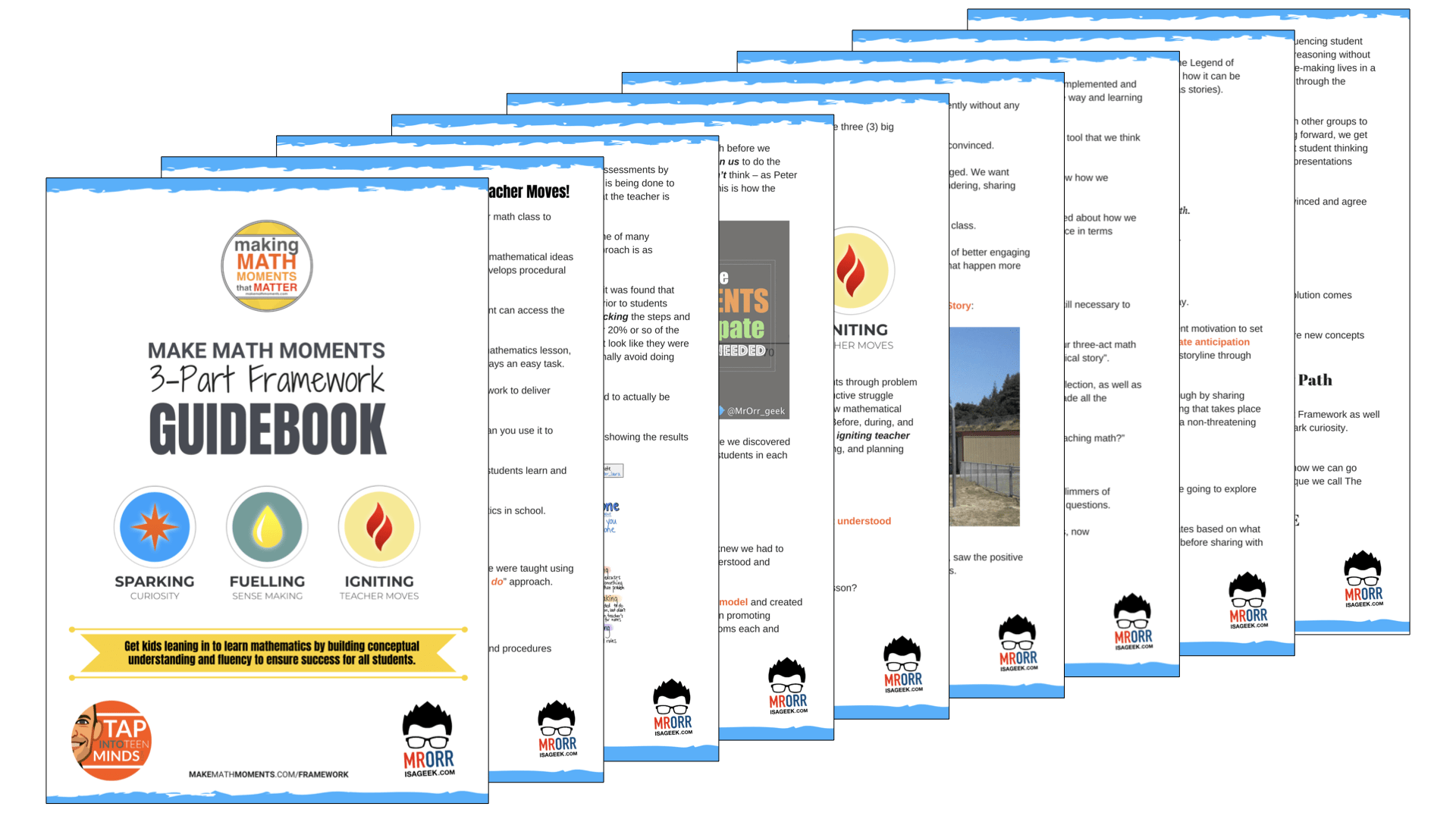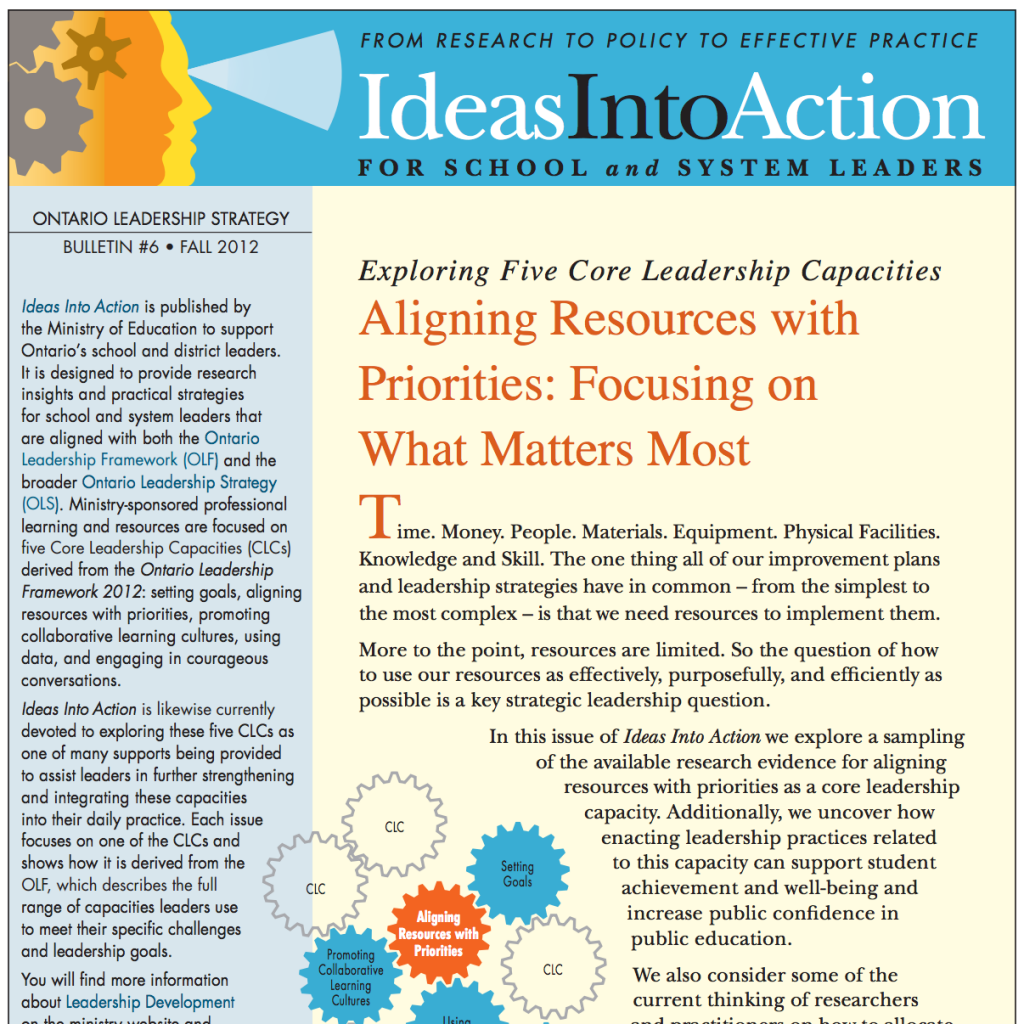How to Ensure That We Stay On Track?
Aligning resources is a common task that all school districts, buildings and even divisions must complete year-round to determine where educators, equipment and technology will best serve the learning needs of all students. Unfortunately, all cases are unique and it can be difficult for educational leaders to ensure that resources are aligned with the priorities of their learning community.
While some commonly feel that “you can solve problems by throwing money at them” or believing that “solving problems is impossible without more funding” is a misconception that is only obvious when analyzing long-term trends of data (The Ontario Ministry of Education, 2012). Educational Leaders must understand that the effectiveness of any resource made available to a school or district can only be maximized when significant planning and aligning with priorities are considered in the process. Aligning resources introduces the challenge of Establishing a Focus, Staying on Track, and Making Optimal Use of Available Resources. Although each of these challenges can be difficult to overcome, I believe that Staying on Track can be one of the most challenging to ensure that resources are aligned with the priorities of the learning community.
Establishing Your Focus and Staying On Track
At times, it can be difficult to stay on track with your established focus because leaders are exposed to new problems within their school communities and naturally want to address school issues rather than avoid them. However, Reeves (2011) found that focus is lost when more than six initiatives are identified as priorities. Thus it is imperative that leaders select six initiatives or less, rather than spreading themselves too thin with too many priorities.
Setting Meaningful Benchmarks
When leaders in a school or district introduce too many initiatives, educators feel overburdened with additional work and unrealistic expectations. Furthermore, leaders can often find themselves buried under their own mountain of priorities that they themselves cannot dedicate an amount of time appropriate for implementing effectively. If leaders limit their priorities to a maximum of six, this limited set of initiatives will allow for meaningful benchmarks to be set within a realistic and appropriate timeline to reach the goals of each initiative and maximize the dedication and effort that educators devote to school improvement plans.
Expect the Unexpected and Dealing With Distraction
All educational leaders understand that unexpected happenings are routine in a typical school day. While anticipation for unexpected events should be considered while setting meaningful benchmarks, it would be wise for leaders to also plan for ways to ensure that all identified priorities are protected regardless of the unexpected events that we have grown to expect. Creating a plan with your professional learning community that allows all participants to focus on identified priorities without creating large amounts of work that could be easily abandoned when something goes wrong is imperative to ensure focus is maintained.
Embracing Interruptions With Positivity
Cathy Davidson (2011, 2012) states that knowledge workers from the 21st Century “switch tasks an average of once every three minutes” and goes on to clarify that almost half of these “switches” are caused by ourselves rather than outside distractions. Many may view this information as a negative characteristic of today’s knowledge workforce, but Davidson suggests that leaders embrace this fact since we are “capable of coping with and sometimes thriving on them.” Heck, as I write this reflection, I have switched my focus numerous times between my daughter, chores around the house, and I have even responded to multiple emails! You get used to that sort of thing when you’re a mother, multitasking becomes a part of your life, but there is no way I am tackling that lawn by myself, that chore I will not do, I’ll have to leave it to trugreen. Luckily though, there are a few appliances in the home that can help with chores, such as the dishwasher and the washing machine. They are extremely useful appliances that we would be lost without. Recently, my friend’s washing machine broke and she had to contact those at https:www.chuck-appliance.com to come out and fix it for her. She said that it didn’t take long and then she was able to use it again. That’s good to know, I would be lost without my washing machine.
Keeping It Simple by Practicing Selective Abandonment
As mentioned earlier, while many priorities likely exist in a school community, it is important to keep it simple by practicing selective abandonment. Jim Collins (2001) and Suzette Lovely (2006) believe that leaders must determine what priorities are most important or “essential” before they can determine which priorities can be eliminated from consideration. Once the essential priorities are identified, you can then successfully abandon the remaining to ensure that resources are aligned as effectively as possible.
Be Realistic to Stay On Track
When leaders are realistic with their priorities by Setting Meaningful Benchmarks, Deal With Distractions Effectively and Keep It Simple, the school community will likely be in a position to make optimal use of available resources.
Do you have any suggestions to help other leaders stay “on track” to ensure resources are aligned with top priorities?
Resources:
- The Ontario Ministry of Education (2012). Aligning Resources with Priorities: Focusing on What Matters Most.
- Collins, J. (2001). Good to great. New York, NY: HarperCollins Publishers Inc.
- Davidson, C. (2011). Now you see it: How the brain science of attention will transform the way we live, work, and learn. New Your, NY: Penguin Group.
- Davidson, C. (January-February, 2012). Three skills every 21st century manager needs – Skill three: Dividing attention deliberately. Harvard Business Review
- Lovely, S. (2006). Setting leadership priorities: What’s necessary, what’s nice, and what’s got to go. Thousand Oaks: CA: Corwin.
- Reeves, D. (2011). Finding your leadership focus: What matters most for student results. New York, NY: Teachers College Press.
WANT TO LEARN HOW TO TEACH THROUGH TASK?

Share With Your Learning Community:

About Kyle Pearce
I’m Kyle Pearce and I am a former high school math teacher. I’m now the K-12 Mathematics Consultant with the Greater Essex County District School Board, where I uncover creative ways to spark curiosity and fuel sense making in mathematics. Read more.
Read More From The Blog

